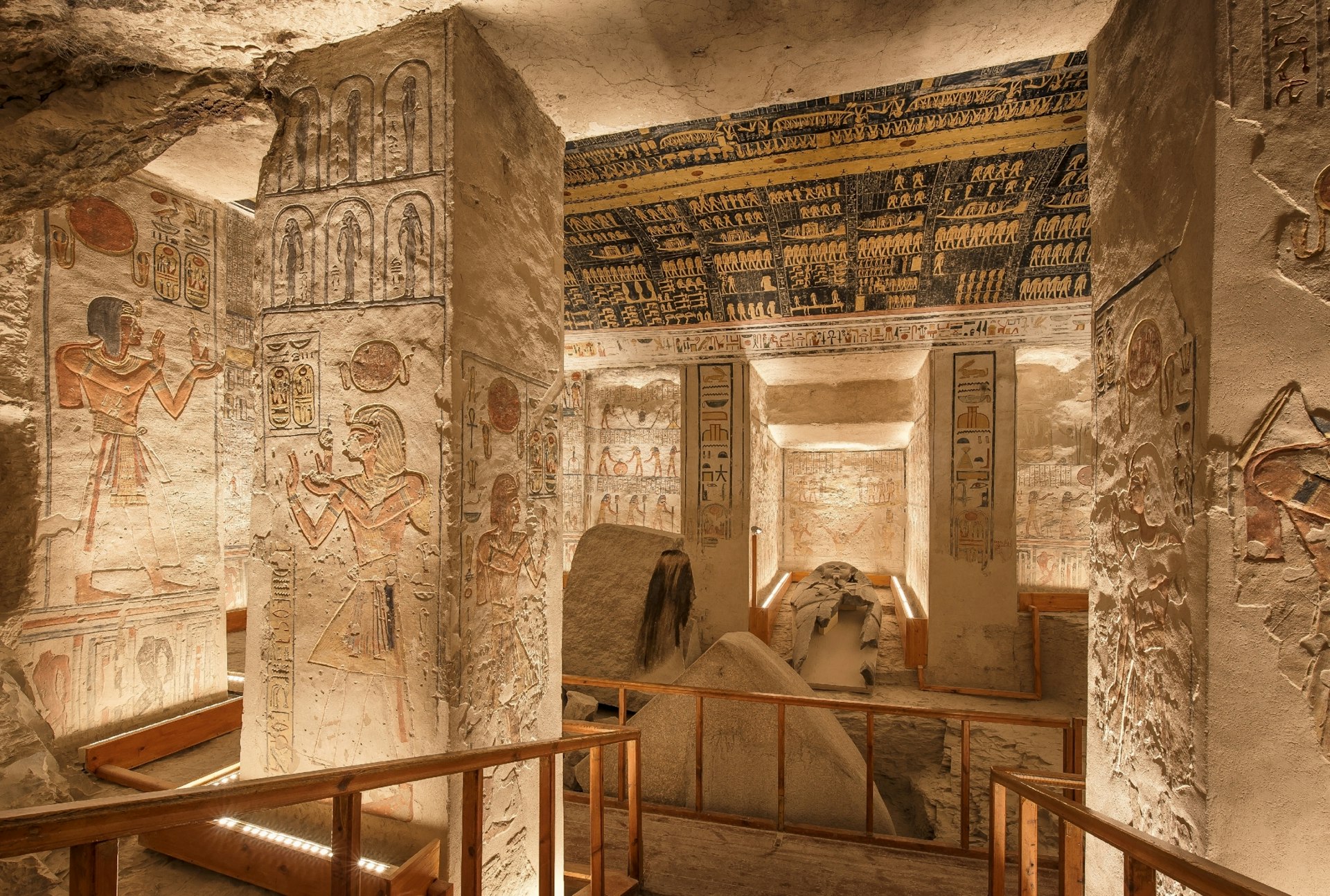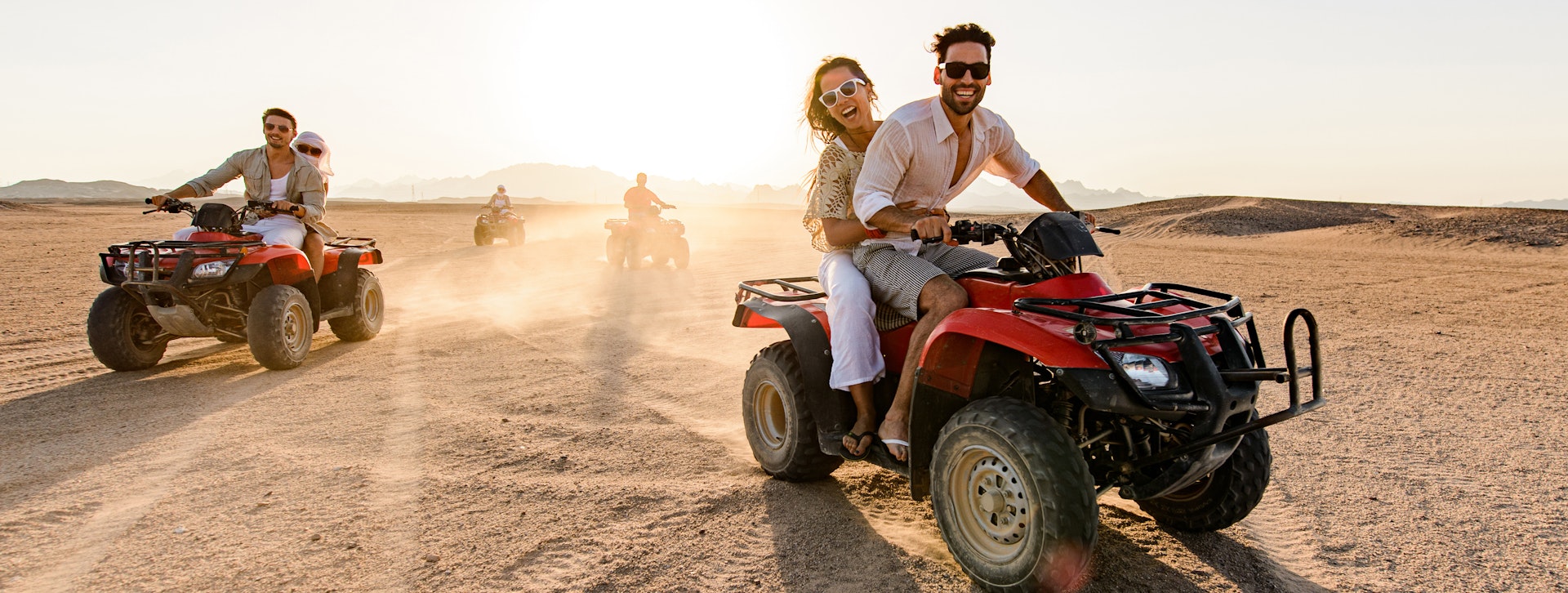Tourism in Egypt is bound by the seasons. While only the hardiest want to troop through temples during the scorching heat of July and August, Egypt’s mild winter brings in flocks of visitors to flop on the beaches, gawk at Giza’s pyramids and cruise the Nile.
A happy medium can be reached by traveling during the shoulder seasons of autumn and spring when the press of fellow travelers isn’t as intense at major sites and daytime temperatures hover at manageable levels.
High season (mid-October—February)
Best time for exploring without the sweat
In the Northern European winter, many travelers (and tour groups) escape the gray skies back home to bask on the beaches of Sharm el-Sheikh and the Red Sea coast this time of year.
You’ll find decent weather across most of the country, although in Cairo and Alexandria be prepared for rain. If you’re here to delve into Luxor’s glut of Pharaonic riches, winter brings blue skies and pleasant daytime temperatures to make long days of rambling around ancient ruins a pleasure rather than an endurance test.
This is also the most popular season to head into the Sinai or the Western Desert for outdoor adventures (from hiking to camel trekking), or to bask in the winter sun between learning to dive in South Sinai and along the Red Sea coast. Divers should note that sea conditions can get choppy on boat dives around December, but shore dives are generally fine.
In Cairo, the cooler weather makes November a good bet for long strolls to discover the capital’s madrassas and mosques. Be aware, it will get colder than you probably expect (especially else after dark) so you also need to pack something warm. Finally, expect high accommodation prices during the winter peak season, especially around Christmas and New Year.

Shoulder season (March—May, September—early-October)
Best time to avoid the crowds
Traveling during shoulder season often brings the best of both worlds. Major monuments aren’t as packed and there’s usually an accommodation bargain or two to be had.
Daytime temperatures can still be very hot in May and September so shoulder season travelers sensitive to heat (and families traveling with little ones) would do well to aim for March, April or October instead.
The weather is generally bearable so you can spend an entire day outside from about late-September into October. This is really Egypt’s best travel season. It’s also a good time for diving. The light along the Nile is at its most soft and clear – great for photography in Luxor and Aswan – while in the Western Desert oases, the date harvest is in full swing.
The sand-loaded khamsin wind begins blowing in March, and the resulting sandstorms can disrupt travel and occasional ground flights; prevent feluccas from sailing in Aswan; and make sightseeing impossible due to low visibility. Add an extra day or two into your itinerary in case plans go awry.
In April, the khamsin can still be an issue, but when it isn’t blowing this is a near-perfect month for Egypt travels. The warmer evenings make it particularly good for overnight felucca trips from Aswan and camping in the White Desert.
May is usually a good time for package-deals to resorts like Sharm el-Sheikh, Hurghada, El Gouna and Marsa Alam.

Low season (June—August)
Best time to dive in the Red Sea
The weather switches to sweltering as average high temperature hit 108°F (42°C). Luxor’s temples and tombs open at 6am so it’s still possible to beat the heat by being an early bird.
Expect to be greeted with an ironic “Welcome to Alaska!” in Aswan. Unless you’re made of extremely tough stuff, it’s best to skip the Western Desert.
Summer is when serious divers head to Sharm el-Sheikh and the Red Sea coast. They’re willing to take the baking heat on land in return for the payoff of calm, warm sea conditions and fantastic underwater visibility. Although Egypt can be dived year-round.
Just to flip the low season rule, summer is the peak domestic-holiday period along the Mediterranean coast as half of Cairo decamps to the beach. Yes, it’s still boiling in Alexandria but at least there’s a breeze.

Can I travel during Ramadan in Egypt?
The dates for Ramadan (the month when Muslims fast during daylight hours) change annually as the Islamic calendar is based on the lunar year.
If you’re traveling during Ramadan, be aware that tourist sites, along with most shops and services, operate shorter hours and many non-tourist orientated restaurants and cafes only open after sunset.
In Egypt, non-Muslims are not expected to observe the fast but visitors should politely show respect for fasters by being discreet – don’t blatantly swig from your water bottle or munch snacks on the street.
